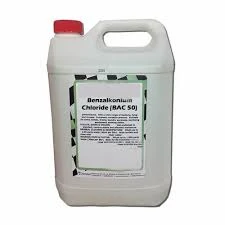diethylenetriamine penta methylene phosphonic acid
Diethylenetriamine Penta Methylene Phosphonic Acid Overview and Applications
Diethylenetriamine penta(methylene phosphonic acid), commonly abbreviated as DTPMPA, is an organic compound that belongs to the family of phosphonic acids. This compound is notable for its multiple applications in various industrial sectors due to its chelating properties and its ability to stabilize metal ions. Its chemical structure, comprising five phosphonic acid groups attached to a diethylenetriamine backbone, grants DTPMPA unique chemical characteristics, making it highly effective as a scale inhibitor, corrosion inhibitor, and a dispersant.
One of the most significant attributes of DTPMPA is its ability to chelate metal ions. The presence of phosphonic acid groups enhances its affinity for metals, particularly calcium, magnesium, and heavy metals. This chelation ability plays a crucial role in water treatment processes, where DTPMPA is employed to prevent scale formation in boilers, cooling towers, and pipelines. Scale formation can lead to decreased efficiency and increased maintenance costs in industrial systems, making DTPMPA an essential ingredient in maintaining system integrity and efficiency.
In addition to its use in water treatment, DTPMPA is widely utilized in construction and building materials. The compound is incorporated into cement and concrete formulations to enhance their durability and resistance to environmental degradation. By binding with metal ions present in the mix, DTPMPA helps to prevent the formation of harmful compounds that can weaken concrete over time. As a result, buildings and infrastructure can have an extended lifespan when DTPMPA is included in their material composition.
diethylenetriamine penta methylene phosphonic acid

Moreover, DTPMPA is also employed in various agricultural applications. Its chelating properties allow it to improve nutrient availability in soils by binding to essential trace metals needed for plant growth. As a fertilizer additive, DTPMPA ensures that micronutrients are readily accessible to plants, promoting healthier growth and higher yields. The compound's role in agriculture underscores its versatility and importance across different sectors.
The effectiveness and environmental safety of DTPMPA have made it popular in numerous applications, but it is also essential to consider its environmental impact. Unlike many traditional phosphates that cause eutrophication and water pollution, DTPMPA is regarded as more environmentally friendly. Its biodegradability makes it a preferable choice for industries aiming to reduce their ecological footprint while maintaining effective performance.
In the realm of research, DTPMPA continues to attract attention due to its unique properties. Scientists are exploring its potential in novel applications, such as its role in drug delivery systems and nanotechnology. The potential for DTPMPA to be modified for use in specialized pharmaceutical formulations indicates a promising direction for future research, expanding its applicability beyond traditional industrial uses.
In conclusion, diethylenetriamine penta(methylene phosphonic acid) is a multifaceted compound with significant implications across various industries. Its chelating properties, coupled with its environmental advantages, render it a valuable substance in water treatment, construction, agriculture, and potentially beyond. As research continues and industries seek more efficient, sustainable solutions, DTPMPA's role is likely to expand, reinforcing its status as an important chemical compound in modern applications.
-
2 Phosphonobutane 1 2 4 Tricarboxylic Acid (PBTCA) – Superior Scale InhibitorNewsSep.01,2025
-
2 Phosphonobutane 1,2,4 Tricarboxylic Acid (PBTCA): Superior Scale & Corrosion InhibitorNewsAug.31,2025
-
Dodecyldimethylbenzylammonium Chloride: High-Purity DisinfectantNewsAug.30,2025
-
2-Phosphonobutane-1,2,4-Tricarboxylic Acid: Scale & CorrosionNewsAug.29,2025
-
Premium Isothiazolinones | Broad-Spectrum Biocidal SolutionsNewsAug.28,2025
-
LK-319 Special Scale And Corrosion Inhibitor For Steel Plants: Advanced Solutions for Industrial Water SystemsNewsAug.22,2025





